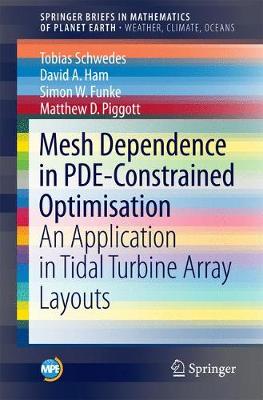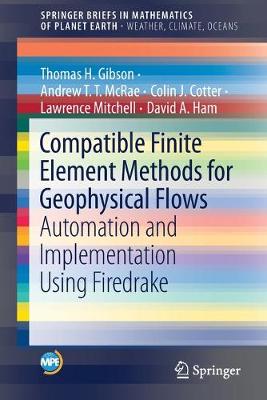Mathematics of Planet Earth
2 total works
Mesh Dependence in PDE-Constrained Optimisation
by Tobias Schwedes, David A. Ham, Simon W. Funke, and Matthew D. Piggott
This book provides an introduction to PDE-constrained optimisation using finite elements and the adjoint approach. The practical impact of the mathematical insights presented here are demonstrated using the realistic scenario of the optimal placement of marine power turbines, thereby illustrating the real-world relevance of best-practice Hilbert space aware approaches to PDE-constrained optimisation problems.
Many optimisation problems that arise in a real-world context are constrained by partial differential equations (PDEs). That is, the system whose configuration is to be optimised follows physical laws given by PDEs. This book describes general Hilbert space formulations of optimisation algorithms, thereby facilitating optimisations whose controls are functions of space. It demonstrates the importance of methods that respect the Hilbert space structure of the problem by analysing the mathematical drawbacks of failing to do so. The approaches considered are illustrated using the optimisation problem arising in tidal array layouts mentioned above.
This book will be useful to readers from engineering, computer science, mathematics and physics backgrounds interested in PDE-constrained optimisation and their real-world applications.
Compatible Finite Element Methods for Geophysical Flows
by Thomas H. Gibson, Andrew T.T. McRae, Colin J. Cotter, Lawrence Mitchell, and David A. Ham
This book introduces recently developed mixed finite element methods for large-scale geophysical flows that preserve essential numerical properties for accurate simulations. The methods are presented using standard models of atmospheric flows and are implemented using the Firedrake finite element library. Examples guide the reader through problem formulation, discretisation, and automated implementation.
The so-called “compatible” finite element methods possess key numerical properties which are crucial for real-world operational weather and climate prediction. The authors summarise the theory and practical implications of these methods for model problems, introducing the reader to the Firedrake package and providing open-source implementations for all the examples covered.
Students and researchers with engineering, physics, mathematics, or computer science backgrounds will benefit from this book. Those readers who are less familiar with the topic are provided with an overview of geophysical fluid dynamics.

